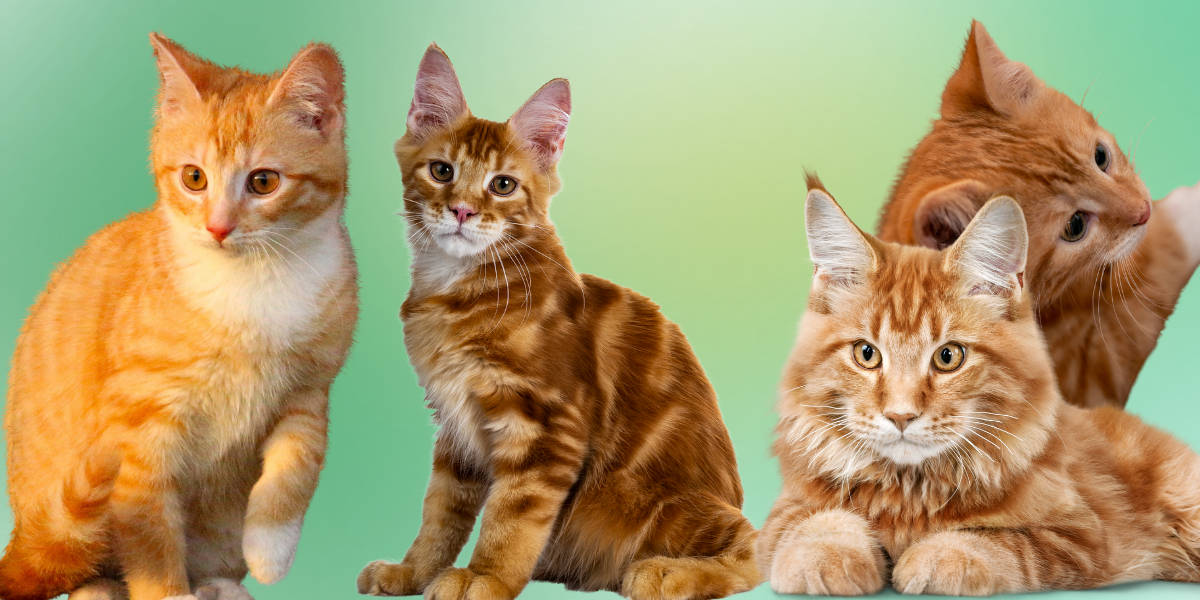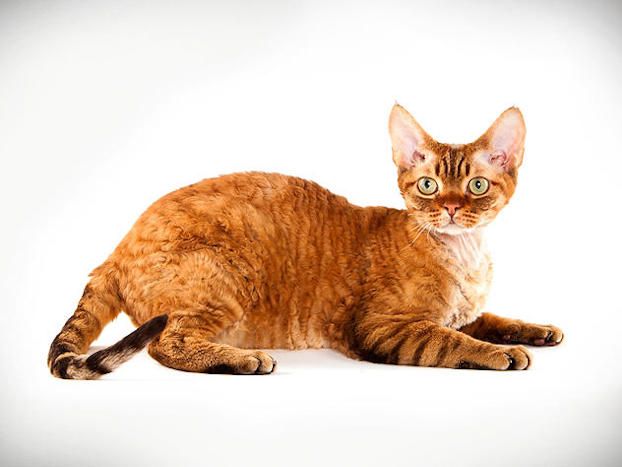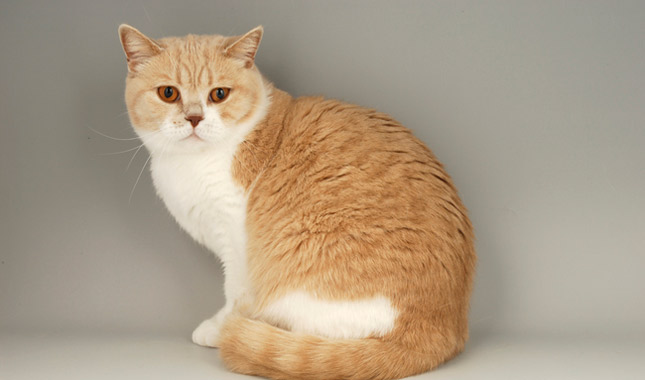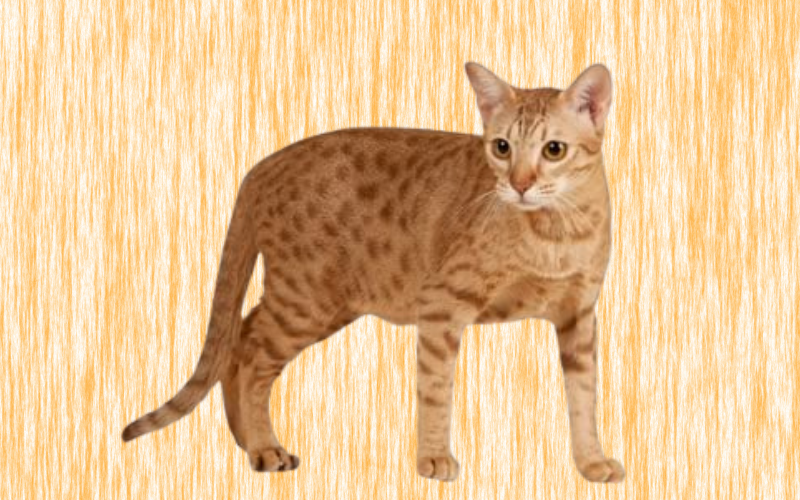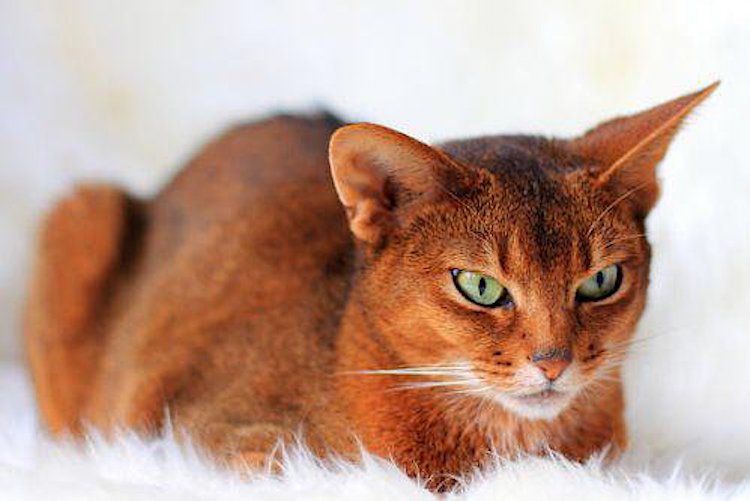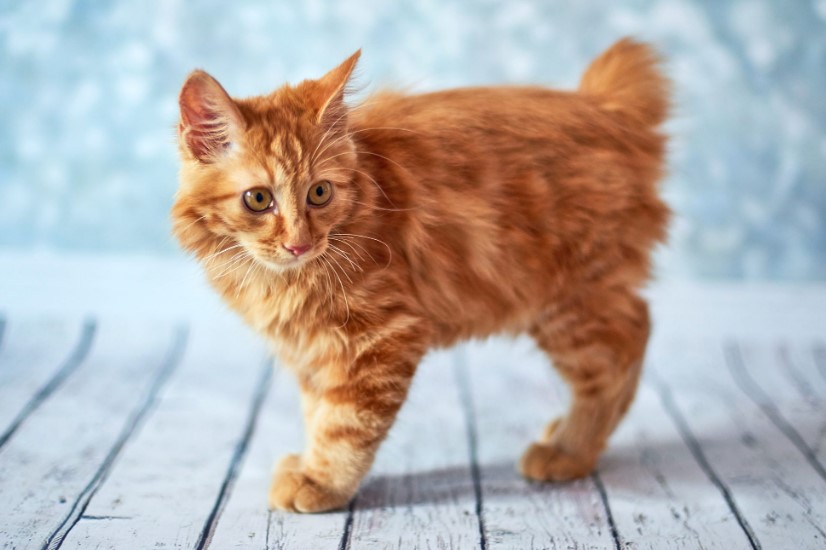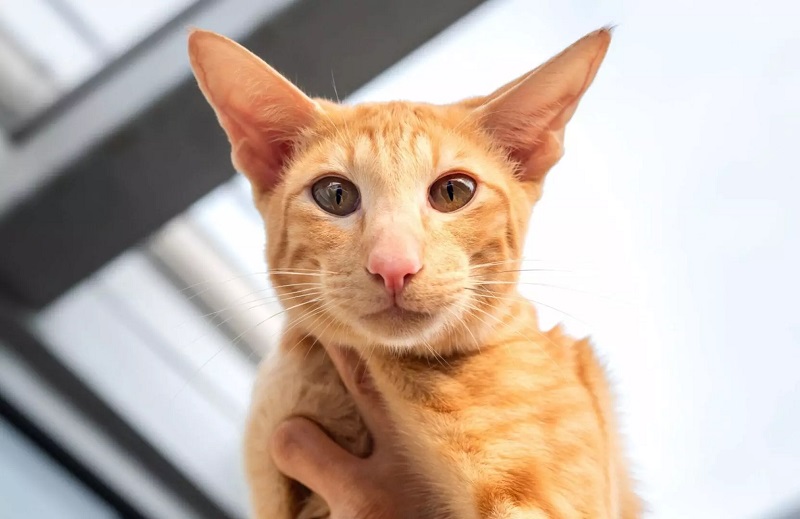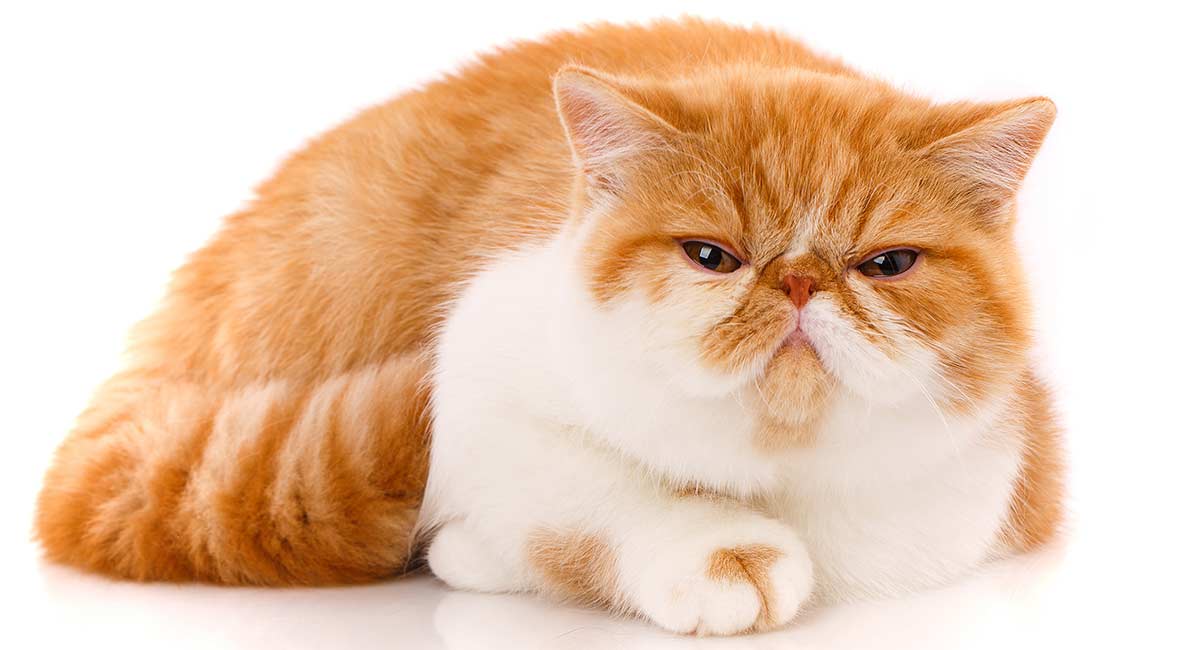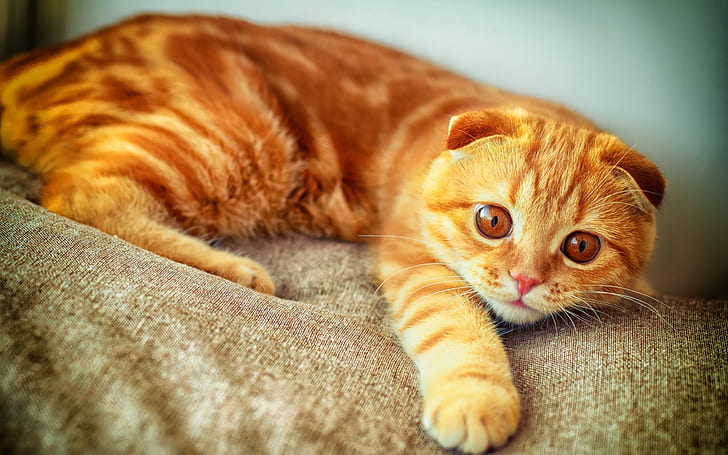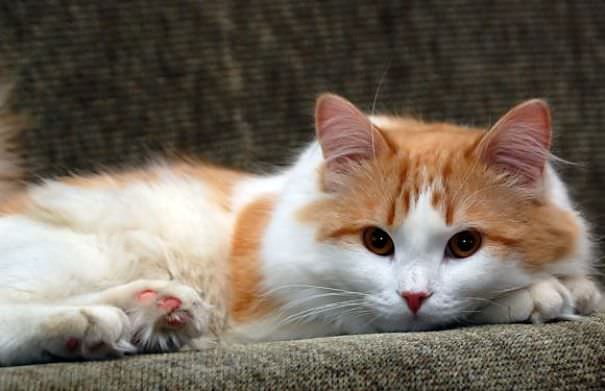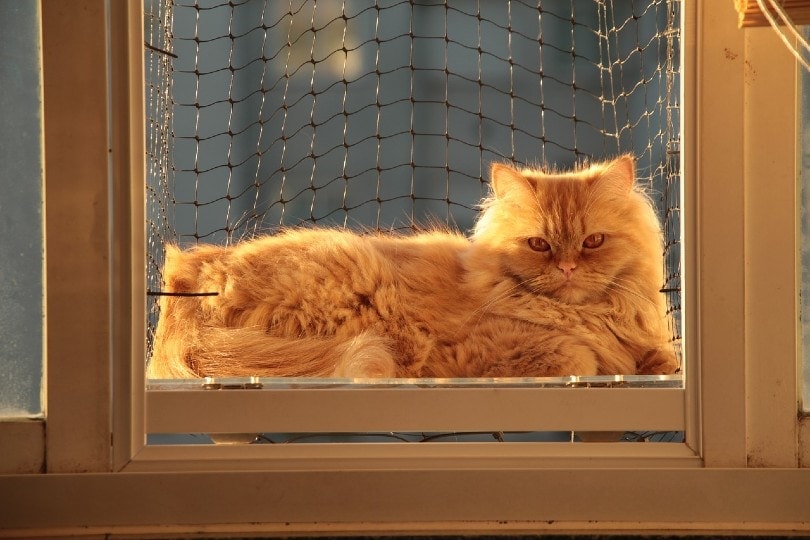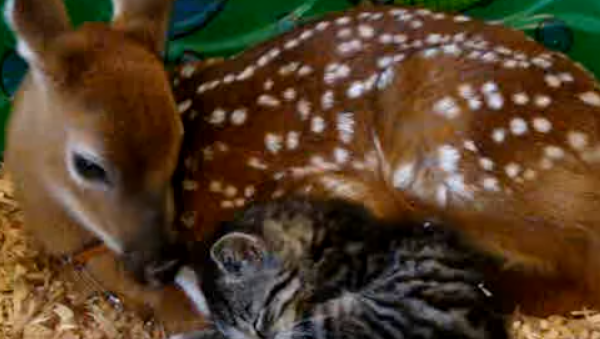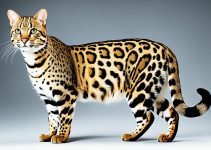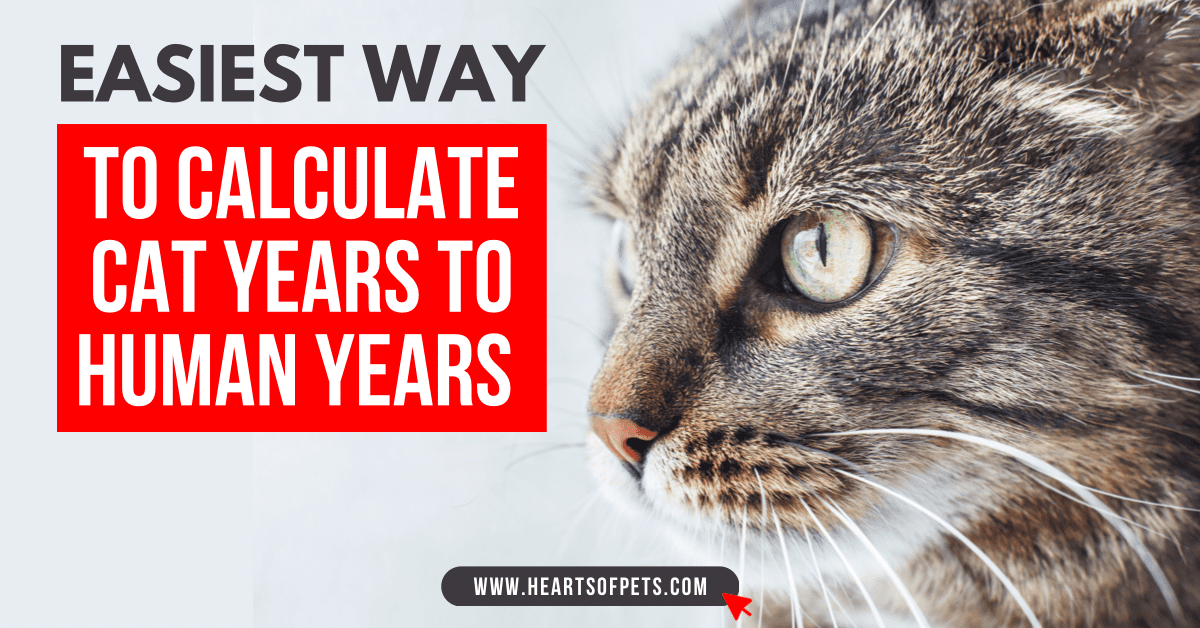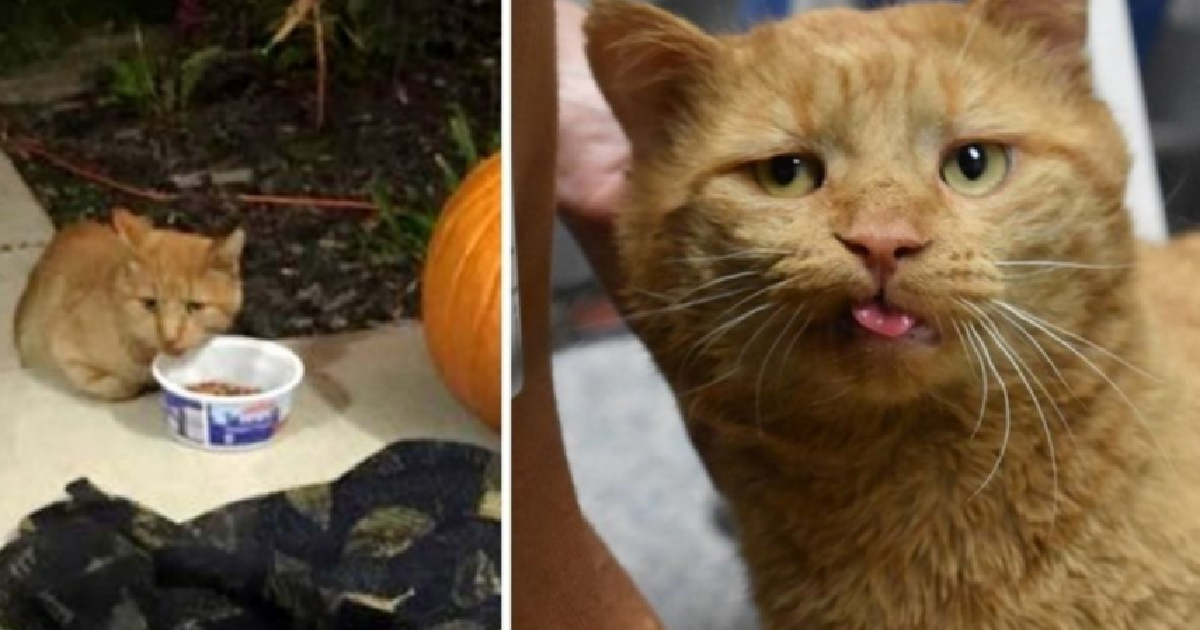There’s just something about orange cat breeds that makes them irresistibly cute. With their soft fur, sweet faces, and playful personalities, it’s no wonder so many people are drawn to them. Check out these 15 adorable orange cat breeds if you’re a cat lover.
Ginger cats are some of the most loving and friendliest felines around. Their striking fur makes them stand out from other breeds, which is why they’ve gained so many fans in a short time. For those who want to take home orange cat breeds but don’t know where to start looking – fear not because these guys can be found almost anywhere you look for them- especially if your heart desires something with more color than black or white.
These Orange Cat Breeds Are Surreal
Fortunately, there’s no such thing as a ginger cat. There are nearly 100 different breeds that can come with orange fur. From the Abyssinian to Persian and everything in between – if you’re looking for this rare color, chances are your favorite breed has it just waiting around somewhere nearby.
Orange tabby cats are not always male. Though females exist, males have a much higher frequency of being born with this coloration due to only needing one copy from each parent, whereas two in carriers will be required for an orange coat to complete itself on the opposite sex’s genetic makeup.
However, if you’re wondering whether your cat has any chance of being either sort—they probably won’t know until after birth because kittens can come into any breed or mix.
Though cats can have an orange coat, certain breeds are likelier than others. These feline siblings typically come from larger gene pools, so there’s a higher chance of exciting color combinations cropping up. If you’re looking forward to adopting your very own ginger puss, look no further because these 15 different types may be just what awaits:
1. Devon Rex
The Devon Rex is a friendly pet with an appearance similar to that of its counterpart, the Cornish rex. The two orange cat breeds share many traits, including curly coats and pointy chins, but some key differences exist. For example, you might expect them both to have orange fur like their relatives do in America, whereas this isn’t true for all dogs who carry these mutations- just ones founded by genetic drift or natural selection due mainly because it’s uneven across populations, so far as we know at present.
Whatever the coat pattern, Devon Rexes is known for its friendly dispositions. They come in many different colors and combinations of those hues, with white being shared on both underside as well paws among bi-colors cats but not only them.
The Devon Rex is a breed with an almost limitless number of coat patterns. A tabby pattern, mainly white on black or red cats, is standard, but you’ll also find flecks that combine any two colors, such as bi-color examples where the white patches usually appear below and near their paws.
The Devon Rex cat has a distinct look that is most loved. The large ears and short nose give this breed their trademark pixie-like appearance, but it’s also thanks to these features combined with the head shape (a broad forehead), which makes them stand out amongst other breeds in terms of how unique each pet can be.
2. Cornish Rex
Another orange cat breeds are the Cornish Rex. However, the color of their coat is not their most distinguishing feature. Instead, these felines are adored for their unique curly coats that feel like velvet to the touch. This is due to Cornish Rex cats having only an undercoat rather than the typical three-layered coat in most domestic breeds.
Cornish Rex’s signature coats aren’t just orange. Everything is acceptable according to breeding standards, including white, chocolate, black, blue, and cream. Solids are the most common patterning, but you’ll also see tabby, bi-color, and the stunning tortoiseshell trio of orange, white, and black.
A Cornish Rex’s eyes are always golden if its fur is orange. You can quickly become lost in their gaze like a cat with big eyes. Their eyes are enhanced by their short fur and triangular-shaped head, making it impossible to look away.
Cornish Rex cats are known as the clowns of the cat kingdom due to their outgoing personalities. They’re energetic and playful, constantly getting into mischief and finding new ways to make their owners laugh! On the other hand, this breed is affectionate and will form a strong bond with its owner, making them an all-around excellent pet choice.
3. Bengal Cat
The Bengal Cat is one of the orange cat breeds with a very distinct appearance. They have an affectionate and sweet personality but look distinctively wild with their spotted coat or marbled color patterns. These beautiful creatures come in many colors, including black and blue, making them stand out from other domestic felines.
Brown Bengal cats have the most orange fur. The base color can vary from light brown to dark, rich caramel tones, with vibrant shades of red present in some examples for this breed type (especially on chestnut coats). They also feature rosettes or marbling throughout their body that contrast beautifully against black patches, giving them an appearance similar to leopards’ markings without being exactly alike.
These adorable cats are perfect if you’re looking for an affectionate and intelligent pet that requires lots of attention. Not only do they have a rugged appearance but also friendly personalities. These big cats are much more attached than domestic ones meaning it will be easy to keep them happy with plenty of love from their human family member.
A unique selling point about this beastly breed? The name itself – why not call yourself “Bengal” when there’s so much going on inside those stripes?
4. British Shorthair
The British Shorthair is one of the rarest orange cat breeds. They’re typically known for their characteristic combination – blue coat and golden yellow eyes, but there have been instances where they’ve had orange fur too.
Unlike other breeds on this list, orange British Shorthairs are typically not the vibrant red you may imagine. Instead, they have a light color that can range from a yellow tinge to creamy pumpkin orange with hints of brown and gold in their coats because it’s only carried by one gene rather than every breed containing its unique trait as many others do. This makes identifying patterns difficult but doesn’t worry – someone will always want what your pet has, so enjoy his beautiful markings while he lasts (which shouldn’t happen too long)
These exist if you’re looking for the most vibrant red British Shorthairs. However, they’re even more recently recognized, and hence one can find them as rarer than their cream cat counterparts, with tortoiseshell or bi-color coats being two other options that might be offered in addition to patterns on coats like hooded patches (also known simply by some people who breed these types).
The British Shorthair is a large, fluffy cat with an irresistible personality. Their broad chests and rounded faces make them seem quite powerful at first glance, but in reality, their gentle nature makes this breed one of the most easy-going felines.
5. American Curl
The most common American curl patterns are orange coats with different genetic combinations. This includes tortoiseshell, calico, and tabby cats that can come from any length or coloration of hair on their bodies. What else do they have going for them? Softness – it’s like silk you’ll feel when touching these guys.
These domestic cats are most famous for their ears. Unlike many orange cat breeds, which have pointed upright ear tips, these animals’ backward-curved ones make them stand out from among other felines in nearly every way. The degree of the curve varies but typically ranges between 90 and 180 degrees Fahrenheit (32 Celsius).
It is important to remember that, while these ears appear adorable, they will require constant cleaning. Because of their unique shape, the ear canal can become twisted and narrowed, increasing the risk of blockage and infection. Furthermore, be extremely cautious because their ears are more delicate, and heavy handling can damage their cartilage.
6. Ocicat
The Ocicat is a friendly and beautiful orange cat breed with an unusual coat pattern. They’re part Siamese, Abyssinian, or American Shorthair mixed to create this spotted, wild-looking feline you can keep as your pet.
Unlike most other breeds, the Ocicat has an Agouti coat. The spots we see on their coats are formed from where darker bands meet and should not be faint or blurred with base coloration- you’ll also notice dark points at the tip of the tail around the backsides and legs. It might look like any old cat, but this feline differs from others because its fur gets richer shades near joints, making it professionally groomed.
They are also known as cinnamon-colored Ocicats because of their light orange base, darker orange patterns, and pink nose. Even yet, the color of the backdrop and the spots might vary widely. The marks may appear more reddish-brown than blazing orange over a light yellow or beige background. Cinnamon silver is yet another variant to choose from. The primary color of these animals is a softer silver, and they have orange spots all over them.
The Ocicat may look like a wild cat, but its personality reflects that of any other house pet. They are intelligent, lively creatures who enjoy human company and love to be entertained by you. However, they have some natural qualities that set them apart from others.
7. Abyssinian
The Abyssinian is a short-haired orange tabby cat. Unlike many other orange cat breeds, this breed only has one coat pattern: ticked tabby. Rather than the traditional tabby stripes, ticked tabbies have agouti hairs.
The coloration of an Abyssinian is unique. They have a light base with several bands that get darker as you move towards the tip, resulting in their signature “ticking” pattern on each hair rather than across the whole cat like other breeds. Orange Imports, also known simply by its common name red or sorrels, can be either copper-colored at heart but covered up visually due to lighter tipping – similar to seeing when someone dyes their hair vivid shades.
The Abyssinian’s original coat color was not orange but a reddish brown with black ticking. A unique mutation caused this cat to appear in shades of red, and all have recognized it as an iconic breed among other breeds.
The orange Abyssinian cat breed is known for its short-haired ticked coat, but there are also long-haired versions. One example of this would be the Solami; they have similar patterns and come in sorrel too.
8. American Bobtail
You’ll be hard-pressed to find a more diverse range of orange cat breeds than what Orange American Bobtails have in store. They come with everything from reds, blues, and blacks down through white’s cinnamon cream colors. The length also varies depending on how you want your cat wielding its tale; whether it longs or shorts is entirely up for grabs when dealing these guys out into society.
The American Bobtail is one of the most beautifully unique breeds in existence. With cats able to come with any pattern, it’s no wonder these creatures have captured people’s hearts for years. Bi-color and calico patterns, like orange patches on black or white fur, give them even more character.
The American Bobtail is a short-haired kitty with an adorable bobbed tail. The most unique thing about this breed is its shorter than average proportions and tiny stature, making it perfect for families looking to adopt another pet or small apartment dwellers.
They are often mistaken for being related to the Japanese variety, but they are pretty different. The more wild-like appearance of this breed will make you think twice before letting them go after your cat.
9. Oriental Shorthair
The Oriental Shorthairs are a sight with their spotty coats and vibrant colors. The most common pattern for these orange cat breeds is spotted tabby which can come in many shades. However, you’ll find ticked cats and mackerel-style oranges mixed with rich browns (and classic red tabbies). No matter what kind of coat your favorite little friend may have thought, it should always be short-haired like its name suggests because if there were any longer than 18 inches or so.
If you are looking for a cat with an eye-catching feature, look no further than the Oriental. Their bright green eyes will be sure to grab your attention. Unlike many other breeds who have gold or yellow irises in comparison (as opposed), these oranges stand out even more because of their contrast against this patterned coat that they wear so proudly on display for all world’s see…or at least those people lucky enough gets access before everyone else does.
Some cats have coats that range from bright oranges, reds, and browns to greys. These tabby-covered beauties can be found in America in what some people call the “cat fancy” or CFA (Cat Fanciers Association). There are more than 300 different color combinations for this breed, so you will probably never see one exactly like yours.
The coat is the most obvious difference between an Oriental Shorthair and their Siamese relative. They have long, pointed ears that give them a catlike appearance while standing on two legs like humans. In addition, these cats’ coats can come in many different colors, including chocolate brown and black seal point bi-colored Bengal Mixes, which make for some very eye-catching kitties.
10. Exotic Shorthair
Exotic Shorthairs are comparable to Persians, much as Oriental Shorthairs are to Siamese. In practically every sense, these orange cat breeds are a short-haired variant of its long-haired sister, the glamor puss. They have the same sweet and calm temperament, unique flat nose, large rounded eyes, and small ears. A denser, shorter, and more controllable coat has replaced their long-haired fluffy one.
Exotic Shorthairs can have orange coats, just like their Persian forebears. The pattern of red hairs can take on a wide variety of forms. Various tabby patterns, tortoiseshell patterns, and calico patterns are all examples of this. Exotic Shorthairs can also be cream, a diluted form of the red gene in the cat. What a lovely shade of cream-colored orange this produces.
The orange shorthair cats are just one of the many different coat patterns and color combinations you will come across. There are even Exotic Shorthairs in blue, black, chocolate, or lilac! For markings, there’s everything from smoke to shaded patterns.
11. Scottish Fold
The Scottish Fold is a breed of cat known for its distinctive features. This adorable feline has tiny ears that flop forward towards their skull, giving them an owlish expression when coupled with round faces and big eyes, which make up one half or more on each side.
Susie was a Scottish Fold cat who lived on a farm in Scotland. She had white fur, but many of her descendants now also sport an orange coat known as “red” due to this spontaneous small ear mutation she bore from generation to generation.
The Red Scottish Fold is a stunning and unique breed of cat. They’re typically brilliant dark red with no noticeable tabby markings, always entirely orange, including their paw’s underside nose pads. This coat color can be coupled to golden or copper eyes – they are “red all over.
It is one of the most well-known breeds in this world. However, plenty more coats can also be found with an orange tip. These include “shell cameo” or chinchilla hair on top while keeping their undercoat white – which gives rise to variously colored patterns throughout each coat texture depending upon where you look (e shifting copper hues).
Scottish Folds have one of the most diverse coat colors of all domestic breeds. The Cat Fanciers’ Association (CFA) lists any combination possible, which means there’s a higher chance for an orange cat breeds to be sighted – thanks primarily due to their large gene pool and range from seal point Siamese patterning down through Burmese lotus fur with Nvidia weaving throughout.
12. Turkish Angora
Turkish Angora are orange cat breeds originating from Scotland. This unique type of feline comes to us via Turkey, where it has been around since the 1600s. Some experts think of them as one-of-a-kind – long-haired cats who entered Europe early on in its history and helped shape what we know about domesticated breeds like ourselves.
Initially, only white coats were accepted for the breed, but this is no longer the case. Their lovely long-haired coats are available in various colors, including white, cream, black, silver, and red. Yellow or orange eyes are commonly seen with the bright orange coat. However, cream coats, which are a light red, are also seen with blue or green eyes.
The various coat patterns also vary greatly. Turkish Angoras have solid coat colors, tortoiseshell patterning, calico coats, and tabby markings. A ginger cat with a solid coat, on the other hand, is extremely rare. Even if they appear to be one color, closer inspection reveals subtle markings. This is due to cat genetics – orange fur coats are always patterned in some way.
Turkish Angoras are among the most intelligent breeds, but their sociability may take time to wane. They’re also highly playful and love being around people or other animals. If you have plenty of free time for your pet, this might be an ideal choice because they can learn quite quickly how much fun it is when he’s not letting themselves get bored with simple tasks like chewing their favorite toy over again.
13. Munchkin Cat
The Munchkin Cat, also known as the “Sausage Cat,” is well-known for having short legs. Again, genetics is to blame for their short legs. This time, it is a dwarfism-causing gene that is to blame. While the bodies of these cats usually grow, their limbs have stunted growth, making them disproportionately small.
The breeding of these cats was highly contentious because they were bred with physical deformities to appease humans. However, The International Cat Association officially recognized them in 1994. (TICA). However, for the time being, this is the only cat registry that recognizes Munchkin Cats as a breed.
Aside from their contentious small limbs, another distinguishing feature of this breed is the wide range of coat colors they can be seen in. Munchkin Cats come in every genetically possible color combination, pattern, and style. Of course, orange coats are on the list, often with white or beautiful tabby markings.
Munchkins, like ginger cats, are known for being some of the friendliest felines around. They are confident and playful despite their small size. This breed is well-known for being a loving family pet, so imagine how friendly a ginger Munchkin cat could be.
You may not know this, but there’s a reason why Munchkins and orange tabby cats are so affectionate. It all boils down to their appearance. Both sweet little Munchkin’S dubs (as we call them) Withings or Ginger coats tend to be seen as two of the more endearing characteristics in pet-town; therefore, these furry friends likely got handled less during childhood since everyone wanted attention from them too!! As such result is typically friendly felines who will give you hugs when given an opportunity – which makes for great company on your next adventure.
14. Persian
The Persian cat is a beautiful and affectionate breed that stands out for its luxurious appearance. Because of their sweet personality, these cats have been called “the glamor puss” with thick plush fur coats.” They make an ideal pet choice with great characters to match.
There are many different colors and patterns of Persians. Some examples include silver, white fur with blue eyes; red cats partnered up to give stunning tortoiseshell or calico coats (a mix between partly African Wildcats); and pink is not uncommon.
However, these beautiful cats come at a price. You must brush your Persian’s fur daily, or he will mats from forming, and you’ll have to bathe him about once per month, so his coat stays silky smooth.
15. Maine Coon
Another example of a long-haired orange cat is the Maine Coon, one of the giant domestic orange cat breeds. Red Maine Coons are relatively standard, and three different orange color combinations can be found. They are as follows:
- Solid Red: Their coats appear to be the same color. However, looking closely, you will notice this is not the case. There are faint tabby markings. Solid red coats are the most difficult to find among the orange Maine Coons.
- Red Smoke: Maine Coons with red smoke coats have orange fur with darker tips and white at the base. With such long locks, this transition is genuinely stunning. They have a much lighter, creamier complexion.
- Red Tabby: The red tabby is the most common orange coat. This area has distinct tabby markings with a mix of light and darker tones. There are three tabby markings: ticked tabby, classic tabby, and mackerel tabby.
The Maine Coon cat is a large breed, but don’t let its size intimidate you. This gentle giant has earned the nickname “gentleman” for its sweet and affectionate dispositions. They make great family pets that will suit any household with love in need–red or tabby coat optional (or even both).
Ensure that your home can accommodate those looking to get a Maine Coon. Not only will they need more space than other breeds of cats but also an extra-large litter box or large tree.
Conclusion: Orange Cat Breeds
As you can see, many of the most popular domestic orange cat breeds can have orange coats. Everything from the large and fluffy Maine Coon to the wild-looking Bengal and everything in between are included. There is, however, no single cat breed that consistently produces orange kittens.
The genes inherited from each parent determine whether or not any of the breeds I’ve mentioned have orange fur. Still, these are your best options if you want an orange cat.
FAQS (FREQUENTLY ASKED QUESTIONS)
Q: Are orange cats rare?
A: With up to 80% male cats, it’s no surprise that orange cat breeds are pretty rare. The BBC reported that these female felines have a different gene than humans; they carry an X-linked trait on their Chromosomes.
Q: What breed of cat is Garfield?
A: Based on his personality, facial features, and striped ginger fur, Garfield is likely an orange tabby Persian cat or Exotic Shorthair.
Q: Do all orange cats have green eyes?
A: Orange tabbies come in various eye colors, usually gold or green.
Q: What are orange cats known for?
A: Orange cat breeds are friendly, Velcro cats. Not only do they have a reputation for being super affectionate, but it’s been long believed that male vs. female felines tend to be friendlier. With 80% of orange tabby males and almost no females in this breed, the population-you can see why people think the same way about these guys when they’re around others who share their species.
Q: What is the most expensive cat?
A: Top 12 Most Expensive Cat Breeds
- The Ashera – Up to $125,000
- Savannah – $50,000
- Bengal – $25,000
- Persian – $5,500
- Peterbald – $5,000
- Sphynx – $3,000
- Scottish Fold – $3,000
- Russian Blue – $3,000
- American Curl – $1,200
- American Wirehair – $1,200
- British Shorthair – $800 to $1,000
- Maine Coon – $1,000

